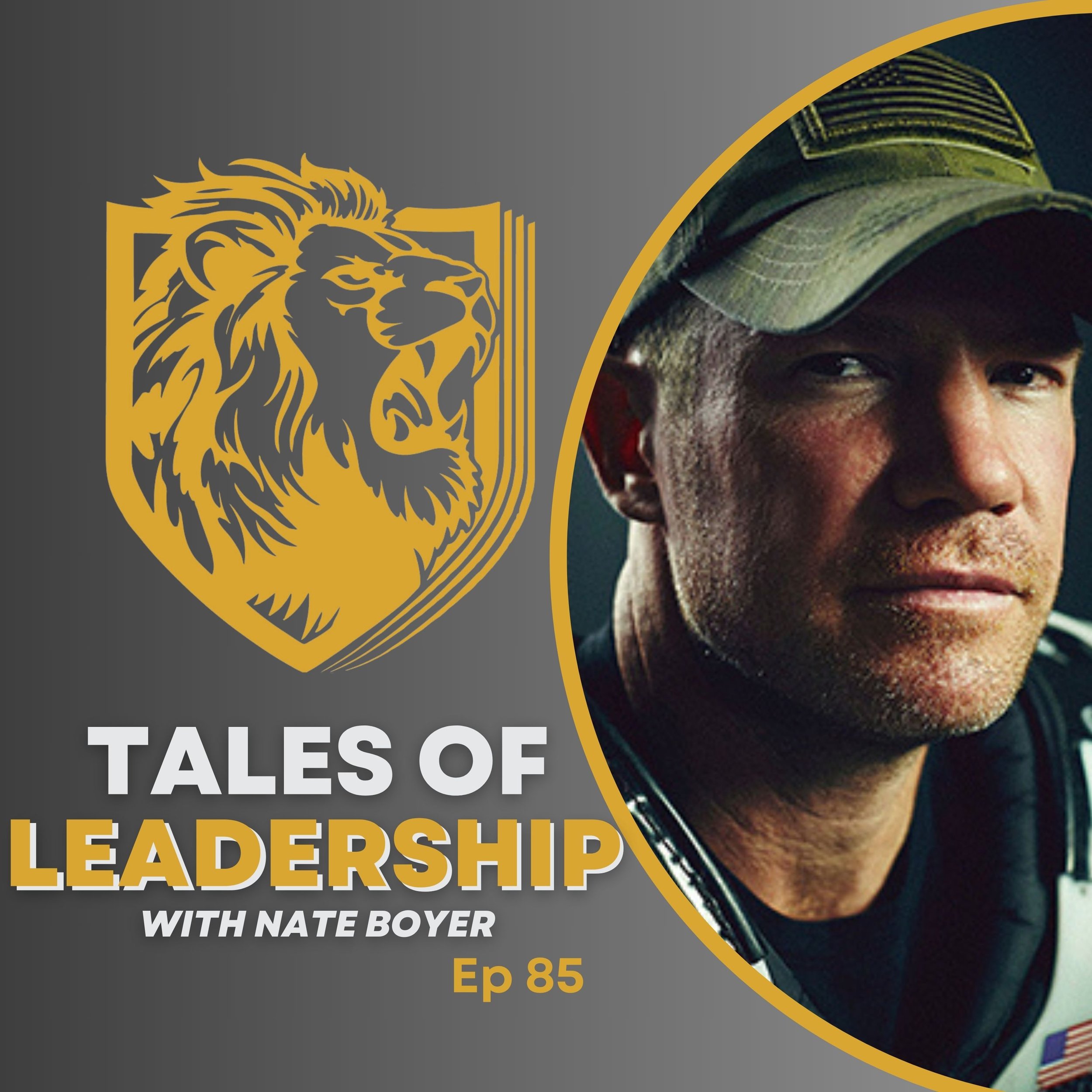Article 14: Eight (8) Ways To Win At Succeeding Together
The previous blog covered seven ways to lose in the 4th Phase Of Leadership (POL), Succeed Together. This month's blog will outline seven ways Purposeful Accountable Leaders (PALs) win at succeeding together. As you progress on the leadership bridge, success no longer depends on your ability to perform the work. Leaders are judged by their team's ability to execute. However, to succeed as a unified team, you must create an environment that allows for momentum and growth. The 4th POL is a natural obstacle; to progress on the leadership journey, you must become a sledgehammer and breakthrough. Remember, you were put into a position to achieve results. If you fail, you are failing your organization. Here are eight ways to win in the fourth phase of leadership.
If you are successful, it is because someone, sometime, somewhere, gave you a life or an idea that started you off in the right direction.
-Melinda Gates
Weaponize Your Strengths
A PAL understands their strengths and can tap into them for their team's benefit. Your strengths should supercharge your team toward achieving results. For example, one of my top strengths is being focused and a connector. I can cut to the core of problems and connect the right people to achieve extraordinary results. However, I also understand that my strengths are not my team’s. To succeed together, a leader must clearly understand each member's unique strengths and how they can play into achieving success. There are many ways to discover your team's strengths. An excellent online assessment from Clifton Strengths is a way. The Clifton Strengths assessment breaks down 34 themes and provides a leader with their top five strengths. I have personally used this for myself and others I have led. However, if you're looking for a more straightforward approach, a great way is through one-on-one discussions with team members. I practice eliciting feedback from my team in initial and quarterly discussions. In these discussions, I ask team members about their strengths and how they can best help the organization. Conversely, I ask those team members about what they believe my strengths are for self-awareness. PALs align their strengths against their teams to amplify their ability to win.
Create The Path
Leadership is a journey, and PALs create the path for their team. To begin moving towards results, a leader must establish the course for their team to walk. Part of being a leader is casting a vision for the organization. If you've progressed to the 4th POL, you've already established strong relationships with your team and started to lay the foundation of trust. Now it's time to work towards a shared vision for the organization. Remember, your team will not buy into your vision unless they have bought into you first. I have learned this lesson countless times by watching other leaders, including myself, fail. People do not follow words; they follow leaders that align words with deeds. PALs understand their values and allow them to shape their decisions, creating buy-in and laying the foundation for the path.
Crucible Events
Creating strong, authentic relationships is a continuous process. A PAL creates the environment to forge tighter bonds through crucible events. Crucible events allow your team to be put in stressful situations with no impact on the organization if your team fails. Those stressful situations will highlight weaknesses and show individuals' true character. When times are tough, an individual's true self will always become clear. It's much better to realize who you have on your team and fail when it's practice, so you do not make those same mistakes when it counts. When I was a young soldier, I will never forget the words my drill sergeant told me. "McMillion, today you were going to learn through pain or repetition. What is your choice?" To forge a strong team, you must challenge them to push beyond what was thought possible. You need to take them to what is possible. PALs understand crucible events are required to forge tight bonds and create the environment for their team to grow.
Joshua K. McMillion
Take the time to fail and learn in crucible events so you do not fail when it matters.
Deliberate Feedback
PALs are deliberate when requesting feedback from their team. To achieve success and produce results means to fail. You will fail, and your team will fail, but the trick is to fail fast and small. Once you reach that moment, you must pull everyone together and do a hot wash. In the military, after every training exercise or mission, there is always an After Action Review (AAR) to capture lessons learned. More importantly, those failures are captured in our shared with others outside our organization. Those lessons allow your team to create Standard Operating Procedures (SOPs), which prevent others from making the same mistake and ultimately improve the organization. Next time you fail, try asking these questions. What was supposed to happen? What did happen? What did we learn? How will we get better next time? The worst thing a leader can do is fail and not learn. PALs never fail; they are consistently improving with every teachable moment.
Positive Environment
PALs create in foster a positive work environment. Leaders often neglect to create a fun working climate due to the job demands. Leadership is chaotic and messy; it's your job to make the time. Being a leader means accepting the whole person; unless you meet people where they are and accept them for who they are, you cannot achieve that. PALs take the time to recognize excellence and make opportunities for their organizations to engage in a professional non-work environment. It starts with you. Unless you make it a priority, no one else will make it a priority. In the military, there is a Family Readiness Group (FRG) program. The FRG's mission is to equip spouses and loved ones with information and support when deployed. A secondary mission is to foster a safe environment that allows new military families to adapt to the new lifestyle. Most commanders overlook the program, but I am braced the FRG. Why? Because FRG enabled me to create fun events celebrating extraordinary team achievements and recognizing family members. Leadership is leading the whole person, and you must create deliberate time to make work fun and find creative ways to have a positive work environment. PALs create time to recognize their team and lead the whole person.
Prioritize Tasks
PALs can absorb tasks and clearly categorize them based on the level of importance. A leader's ability to prioritize tasks will result in the organization succeeding or failing. Your team frequently needs guidance and direction to stay on the path. Your job is to provide them with a list of priorities that have been weighed. A simple example I have used is categorizing glass and rubber balls. We have all heard the metaphor "do not drop the ball." Think of the metaphoric balls being made of either rubber or glass. If a glass ball drops, it shatters and is near impossible to repair. The rubber ball, however, is durable and will bounce back and forth. A leader must categorize priorities for the team and remember leadership as a journey. Your task is to take your team on the journey and ensure they stay on the path. PALs prioritize tasks and, as a result, achieve success faster.
Joshua K. McMillion
If you do not set prioritize in life someone else will. Are you willing to live with that?
Shake It Up
PALs are not afraid to change the status quo early. I have seen leaders wait months before making significant changes to the organization. The price is a loss of momentum and stuck on the leadership bridge between phases 3 and four. If you identify areas that will add value to your organization, do not hesitate to act decisively. A simple truth I have learned throughout my 15 years of leadership experience is someone will always disagree with the change. However, having a few members not like the change, is a small price for improving the organization. Leadership is not a popularity contest; it is about making tough decisions and leading with humility, gratitude, and empathy. Be bold, be humble, and do not be afraid to act. When writing this, I am actively taking over a new team. Within two days of the new position, I immediately identified processes and systems that needed improvement to add value to the organization. Before executing those changes, I created buy-in from my team and higher leadership. I am already shaking up the tree because I know the temporary discomfort will be outweighed by the team's success in the future. PALs are unafraid of changing the status quo because they understand how it will impact the future.
Set The Bar
PALs clearly identify the standard of excellence in the organization and hold themselves and others to that standard. One of the hardest things leaders must do is keep themselves and others accountable. Maintaining the standard starts with the core values and principles you want to emulate in the organization. Once established, you must routinely live those values and display the principles without fail. Regardless of your leadership position, someone always watches and weighs your actions. Some people look for that chink in your armor; others watch you because you are a role model. Upholding the standard starts with you, and if you choose to bend the rules, so will your team members. No one is above being held accountable regardless of the time spent in the organization, position held, or influence. Everyone on your team must be weighed equally, or it will erode the standard, causing negative values to overpower the shared core values you want. When you see someone violating your values, act, or you will pay the price. PALs set the bar and maintain it.
Final Thoughts
Over 15 years of leadership experience, I have learned that success starts with the leader. However, to sustain that success, you must learn to work with your team centered around a shared vision. To achieve new heights as an organization, you must inspire your team, work toward a common purpose, and level each other's strengths. Your team possesses strengths that will naturally cover your blind spots and amplify the team's ability to achieve success. But just understanding your strengths and leveraging the organization will not be enough. You must create the path for them to travel. Leadership is to inspire; until you cast a vision vividly showing the course, you will never gain momentum. Focus on your team's head, heart, and hand (3 H's). To apply the 3 H's, ensure your team sees the same future, is emotionally tied to mutual success, and actively cast the vision with you. Finally, do not be afraid to challenge the status quo. Regardless of the decision, someone will disagree. Understand leadership is not a popularity contest. You are charged with making decisions; those decisions usually force others outside their comfort zone.
After Action Review
How do you hold yourself and others accountable?
How have you created a path for your team to start succeeding together?
What is the standard in your organization? Does everyone clearly understand them?
My Mission: I will end toxic leadership practices by equipping leaders with transformational leadership skills.
Together, we will impact 1 MILLION lives!!!
Every day is a gift, don't waste yours!
Joshua K. McMillion | Founder MLC | Founder MLC
































Episode 94 with Leanne Meyer